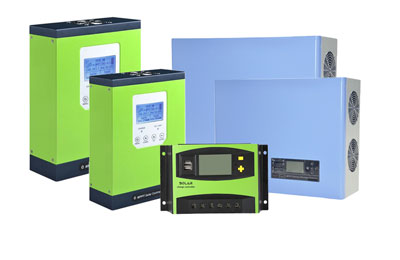In the solar power generation system, the solar controller is very important, mainly used to protect the solar panels and battery charging, as well as the battery load power supply has a protection and intelligent control function. This is why a solar controller is added to the solar power generation system. Solar charge controller plays a vital role in solar power generation systems, and their necessity is mainly reflected in the following aspects.
Protect battery safety
- Overcharge protection: When the solar panel is in sufficient sunlight, it will generate higher voltage and current. If there is no controller to limit it, it may cause overcharging of the battery, resulting in increased internal pressure of the battery, electrolyte vaporization, and even battery explosion or damage. The solar charge controller can monitor the battery voltage and cut off the charging current when the voltage reaches the set value, thereby avoiding overcharging.
- Over-discharge protection: When the battery power is too low, if it continues to discharge, it may cause damage to the internal structure of the battery and shorten the battery life. The solar charge controller can cut off the discharge circuit when the battery power is close to the minimum limit to protect the battery from damage.
Improve charging efficiency
- Intelligent adjustment: The solar charge controller can perform intelligent management according to the battery status and environmental conditions. By adjusting the current and voltage generated by the photovoltaic panel, the charging process can be optimally matched, thereby improving the charging efficiency and the conversion efficiency of the solar panel.

- Temperature compensation: The capacity of the battery changes with the temperature. Solar charging controllers can monitor ambient temperature and adjust charging voltage and current according to temperature changes. Temperature compensation is achieved to ensure that the battery can achieve the best charging effect at different temperatures.
Extend battery life
By preventing overcharging and over-discharging, solar charging controllers can significantly reduce battery loss and failure rate, thereby extending the battery life. In addition, some advanced solar charging controllers also have a balanced charging function. It can ensure that the power of every single cell in the battery pack remains consistent, avoiding premature failure of individual batteries due to overcharging or over-discharging.
Provide data monitoring and management functions
Some solar charging controllers are equipped with display screens or communication interfaces, which can monitor the working status of solar panels, battery charging status, current and voltage, and other parameters in real-time. In this way, users can easily understand and monitor the performance of the entire solar charging system, and adjust and optimize it as needed. At the same time, these data can also be used for system performance evaluation and fault diagnosis, providing users with more comprehensive data support and management functions.
Ensure system safety
When the output current and voltage of the photovoltaic panel are abnormal, the solar charging controller can detect and take corresponding protection measures in time, such as short-circuit protection, to avoid battery damage and circuit failure. This safety protection function not only protects the equipment of the solar charging system, but also avoids potential safety hazards and ensures the reliability and stability of the system.
